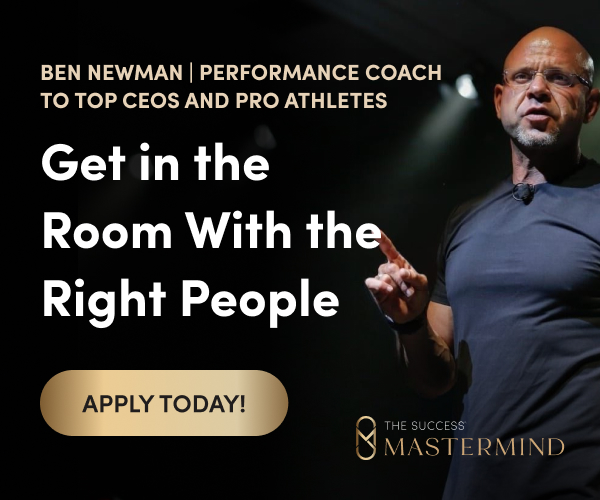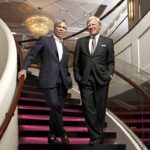Steve Jobs, Apple’s maverick co-founder, once said, “Creativity is just connecting things…. Creative people… connect experiences and synthesize new things…. They were able to do that [because] they’ve had more experiences or they have thought more about their experiences than other people.”
This presents us with an interesting dilemma. We are taught that we should become experts and avoid being jacks-of-all-trades, masters of none. And to become experts, we purposefully eliminate dots and focus on one specific area. Those disappearing dots give rise to my belief that “expertise is the enemy of creativity.”
Odds are that you are an expert. You undoubtedly know your business better than anyone, especially if you have been running it for years.
Unfortunately, that knowledge may hinder your ability to view your business with fresh eyes. Although you have depth, which is useful for slight improvements, you must have breadth to develop breakthroughs. Research bears this out: After analyzing 17,000 patents, Lee Fleming, a business administration professor at Harvard Business School, discovered that teams of people with similar backgrounds yielded few breakthroughs, while cross-disciplinary teams produced more radical solutions.
But rest assured that you, the expert, can still make breakthroughs, and here are four great ways to generate them.
1. Find an analogy.
Sometimes analogies can help you find new solutions. When looking to solve a problem, ask, “Who else has solved a challenge like this?” For example, instead of asking, “How do we make teeth whiter?” dental experts at Unilever asked, “Who else makes whites whiter?”
A workable solution was found when they learned that laundry detergent contains a blue pigment to create the illusion of whiteness. The result? Closeup White Now toothpaste (sold under different brand names globally), which contains a blue pigment.
Or consider the automotive industry, which constantly tries to reduce road noise inside vehicles. The traditional approach was to add insulation, which, because it increases a car’s weight, reduces gas mileage—a poor tradeoff. A better solution used the noise-cancellation technologies found in headphones.
In addition to assisting with product innovation, analogies can inspire new business models.
Boat-rental companies typically charge per day or hour of use, but Florida-based Freedom Boat Club uses a model akin to Netflix’s DVD service. Instead of charging per DVD borrowed, Netflix employs a flat-fee subscription service that allows unlimited access to DVDs, with customers holding a limited number of disks at any one time. Freedom’s similar model allows renters to use boats as much as they want, although they have a cap on the number of reservations at any one time. The result is a win-win: Renters have ample access, and the rental company maintains steady, easy-to-monitor demand. This model could be applied to any industry that has a finite capacity, such as hotel rooms, consulting hours or vehicle rentals.
If your business faces a specific challenge, it’s probably not unique. So look for a solution unearthed by a company in an unrelated industry.
2. Leverage crowds.
If you can’t find a way to build on someone else’s breakthrough as with the analogy tactic, crowdsourcing can be a terrific alternative. You post your well-defined problem as a challenge on a website (InnoCentive.com and TopCoder.com are excellent choices) so people from various disciplines can assist.
For example, a well-known global potato chip manufacturer wanted to make a lower-fat product by shaking excess oil off the snacks. The company’s experts tried many techniques, including the creation of a vibrating conveyor belt that removed the excess oil but was so vigorous that it turned the chips into crumbs.
When the company turned to crowdsourcing to determine what else could shake oil off the delicate chips without damage, the solution didn’t come from a food engineer (or any other kind of engineer). The hero was a musician who put the chips under a loudspeaker, gently removing excess oil with vibrations that could be controlled by the speaker’s volume and frequency.
In addition to crowdsourcing websites, you can ask for ideas from friends, fans, followers and other connections on social media. And you can solicit suggestions by posting a question on your own website and receiving responses via email.
3. Engage in purposeful tangents.
Sometimes you don’t have a specific challenge, but instead—quoting Steve Jobs—you want to connect more dots. What’s the best way to do this regularly?
We typically socialize and learn from individuals who are similar to us. We read books related to our area of expertise. We attend conferences with those of the same background. In our business and personal relationships, we naturally gravitate to those with similar perspectives.
To connect more dots, you break this pattern. Don’t do it randomly; instead engage in something I call “purposeful tangents,” which enable breakthroughs by learning from adjacent fields—disciplines that have something in common with your work.
On the surface, for instance, the cardiovascular system may not be obviously related to the gas pipeline industry. But recognizing that both fields deal with the transmission of fluids through tubes, experts from the two disciplines formed the group Pumps and Pipes. Participants meet regularly to learn how to apply concepts from the cardiovascular system to the pumping of gas and vice versa. They don’t have a specific agenda; they just want a consistent schedule for connecting dots.
What’s your purposeful tangent? My own example can probably help you figure out yours: Although I’m an expert on innovation, I rarely attend innovation conferences. I go broad rather than deep by studying neuroscience, psychology, sports performance and magic along with other topics that are, perhaps surprisingly, related.
In spring 2014, for instance, I spent four days with master magicians to learn about their craft. Magic is about visual misdirection, and innovation is about cognitive misdirection. Magic is about making the impossible possible; innovation is about doing the same.
Because I study so many disciplines, I look at the world differently—broadly—to help clients see things that are in their blind spots and take clients beyond the best practices of their industry. By developing your own purposeful tangents, you can develop a more objective, 360-degree view of your business.
Imitating others in your industry will yield parity or, at best, incremental progress in your business challenges. By looking beyond your field as you do in tactics 1, 2 and 3, you’ll find true breakthroughs.
4. Ask a different question.
Sometimes a breakthrough can be found by examining the problem from a different angle—by posing a new question.
Consider the challenge at a Houston airport. Management asked passengers to share their biggest complaint, and the overwhelming response was the wait time for luggage at the baggage carousels, sometimes 30 minutes. So airport personnel looked at ways to expedite handling. They added extra baggage handlers in order to reduce the time to eight minutes.
But were passengers happy with that improvement? No. New surveys revealed that the speed of baggage claim was still their biggest complaint. To further reduce the time would have required budget-busting investment, so the problem appeared to be unsolvable.
Then airport personnel had an epiphany: Although it took eight minutes for the bags to be moved from the airplane to the baggage carousel, passengers arrived, on average, in only one minute. So airport personnel sought to answer a different question: “How do we delay the passengers?”
They reconfigured the airport so travelers needed about eight minutes to reach baggage claim after landing. Today as passengers arrive at the carousels, their bags are waiting—and when asked about their satisfaction with the speed of baggage handling, most were satisfied.
Albert Einstein reportedly said, “If I had an hour to save the world, I would spend 59 minutes defining the problem and one minute finding solutions.” Take his advice: Assume the problem you are solving is not the real problem and look for other paths toward a solution.
Breakthrough thinking requires that you alter how you look at the world and overcome the blind spots created by your expertise. By connecting more experiences and asking better questions, you will see your business in a new light—one that is revealing and empowering.









